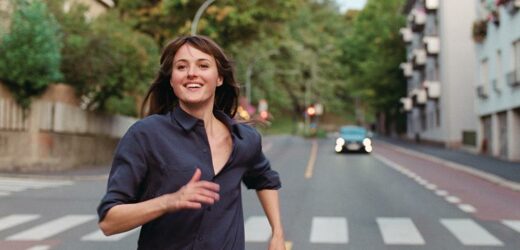On paper, the prominent use of sensitive American singer-songwriter music from the 1970s and ‘80s in a modern Norwegian romantic comedy might seem rather incongruous, if not downright anachronistic. But five decades on from some of their biggest successes, Art Garfunkel, Todd Rundgren, Harry Nilsson and Christopher Cross are back on the big screen helping soundtrack Danish/Norwegian director Joachim Trier’s acclaimed “The Worst Person in the World,” which is nominated for best original screenplay and best international feature film at the upcoming Academy Awards.
Co-written by Trier and longtime collaborator Eskil Vogt, “Worst Person” has already won best foreign language film from the New York Film Critics Circle and garnered Renate Reinsve the best actress award at Cannes. The movie follows Reinsve’s Julie as she navigates the restless transition from her 20s into her 30s, spanning two long-term relationships that conjure tough existential questions about love, fidelity, mortality and the passage of time. Throughout, the music is a crucial link in the narrative of Julie’s often rudderless existence, as she crashes a wedding, trips on mushrooms, bides her time working in a bookstore and begins creating her own art.
“I wanted this sort of bittersweet feeling — melancholic, but joyful,” Trier tells Variety when asked why these retro sounds worked so well in helping tell the film’s story. “There’s something about that kind of music from the ‘70s that felt soft and forgiving. Harry Nilsson will make the saddest love song still seem kind of joyful.”
Nilsson’s “I Said Goodbye to Me” and “I Will Take You There” illuminate key stretches of Julie’s relationship with new love Eivind (Herbert Nordrum) with both hopeful and heartbreaking intensity. In the first 10 minutes, alongside songs from Billie Holiday, Daphni and Cobra Man, Cross’ 1980 smash “Ride Like the Wind” soundtracks the moment Julie quits her post-grad studies (first in medicine and then in psychology) to instead become a photographer.
“I’m establishing a language of music in the film early on that this is going to be like a playlist,” Trier says. “Cross fits emotionally to the scene. It’s not only going to be about the cultural references. I think that’s OK. We live in retro culture, and there’s a freedom to that.” Adds music supervisor Goran Obad, “We wanted music with the duality of being singable but also reflective of a deeper state and experience, which is the topic of the movie.”
Drawn from his 1975 solo album “Breakaway,” Garfunkel’s version of Antonio Carlos Jobim’s “Waters of March” punctuates the film’s powerful conclusion, while Rundgren’s “The Healing Pt. 1,” from 1981, crystallizes both a generational and personal divide Julie experiences while spending a summer weekend at a lake house with her older boyfriend Aksel and his family.
“In that scene, Rundgren seems to be speaking almost spiritually about bigger questions of breathing and being and the heart,” Trier says, “while Julie is doing something seemingly very small. She’s watching the reconciliation of a married couple with children, and thinking about the future. What is her relation to having children and being with Aksel? There was the big scope of that song and the very small details of being at a cabin and feeling lost. Again, the contrast. Music should not be used one-to-one all the time. That’s terrible. Leave space for the audience to make the connection.”

Trier’s lineage has given him rare insight into the mysterious alchemy between music and cinema. His grandfather Erik Løchen was a jazz musician and accomplished director and screenwriter in his own right, and his father Jacob Trier is also a jazz musician turned noted film sound designer. “As a kid, I was not allowed to come on set unless I could be completely quiet and sit next to my dad,” Trier says. “I was also told to be careful putting the needle on the record, because if I messed around with it, I’d scratch it. I learned that almost before I could walk.”
By his teen years in the ‘90s, Trier was cutting his teeth directing skateboarding videos that utilized Bad Brains and Herb Alpert songs in equal measure to “nail the feeling and elevate the visual.” After studying cinema at prestigious schools in Denmark and England, Trier released his first film, 2006’s “Reprise,” which made him a quick hero to a younger generation of global-minded filmmakers. Not surprisingly, Trier is also an accomplished DJ, whose sets lean toward soul, disco and electronica when he spins records with friends Erlend Mokkelbost and Torgny Amdam at their “Noble Dancer” club nights in Norway.
“Wim Wenders had a quote that America has colonized our subconscious as Europeans — I embrace that,” he says with a laugh. “I grew up learning English by reading Thrasher magazine in a culture where, yeah, there were some cool bands, but I’m happy I was able to listen to music from around the world. Thank god! It saved my life that I grew up with Brazilian jazz and British rock from the ‘60s. It made me feel like the world of my interior mind was bigger than the physical, national space I was in.”
Hence, the use of oddities like the Rundgren song, which Trier first heard on vinyl at the home of actor Anders Danielsen Lie, who plays Aksel. “I thought, damn, how can I use this for something?,” he recalls. It wound up fitting perfectly in the aforementioned scene when Julie, already feeling ambivalent about settling down and having a family, observes from a distance as Aksel’s brother and sister-in-law make up from a fight the night before.
The generation gap is further illustrated in the preceding scene when Julie is dancing blissfully at a party to Amerie’s 2005 R&B jam “1 Thing,” only to have it turned off by Aksel’s brother in favor of the ‘70s cult classic “Bra” by British funk group Cymande. “He’s kind of the man-splainer who Julie’s not so sure about, but they’re having fun,” Trier says. “He breaks off her song and puts that on, and she goes, oh, it’s a good song too. They’re happy. They’re dancing. I’m trying to use those songs as a dialogue between generations.”
The Garfunkel sync “was a Eureka moment,” according to Obad. “Joachim called me from the edit studio and said, there’s something I really love. It really works. Before I fall in love with this, I’m going to forget about it, and please work the licensing and rights for a couple of days. Luckily, it worked out, and nine out of 10 times, that’s the one song or music moment that people have been talking about from the film.”
And while the vintage singer/songwriter fare conjures numerous evocative, thematic moments in the film, syncs from Scandinavian and European artists such as Amulet, Chassol, Ola Flottum and Otto A Totland serve almost as a collective score to help ground the action in modern-day Oslo. “Those were pieces that captured a vibe just brilliantly,” Obad says, noting that cult-classic Norwegian band Turbonegro’s “Back to Dungaree High” was just the right substitute in an air-drumming scene when a live version of Iron Maiden’s “Number of the Beast” proved far too expensive to license.
Plans are still taking shape for an official soundtrack for “The Worst Person in the World,” and without giving specifics, Trier and Obad say they’re also mulling ways to represent the film’s music online in “a really exciting and new way.”
Perhaps due to the way the diverse soundtrack combines with the specificity of the film’s setting to make weighty aspects of humanity seem relatable, “The Worst Person in the World” is transcending geography and connecting with audiences across the globe. In four weeks of release, the movie’s worldwide ticket sales have zoomed well past its $6 million budget, and were enough to place it at No. 13 at the U.S. box office the weekend of March 4 to 6.
Says Trier: “If you listen to the kind of stream-of-consciousness lyrics of ’Waters of March,’ it feels like it’s about the seasons changing, time passing, the wheel of time turning, the fragments that make a life, seen from afar. But it’s also about the details. That’s a paradox I’m interested in. It’s quite a silly film, with someone farting on a toilet and people running around and falling in love. But it’s also a film about mortality and loss. The music was key in bridging those contrasts.”
Source: Read Full Article


